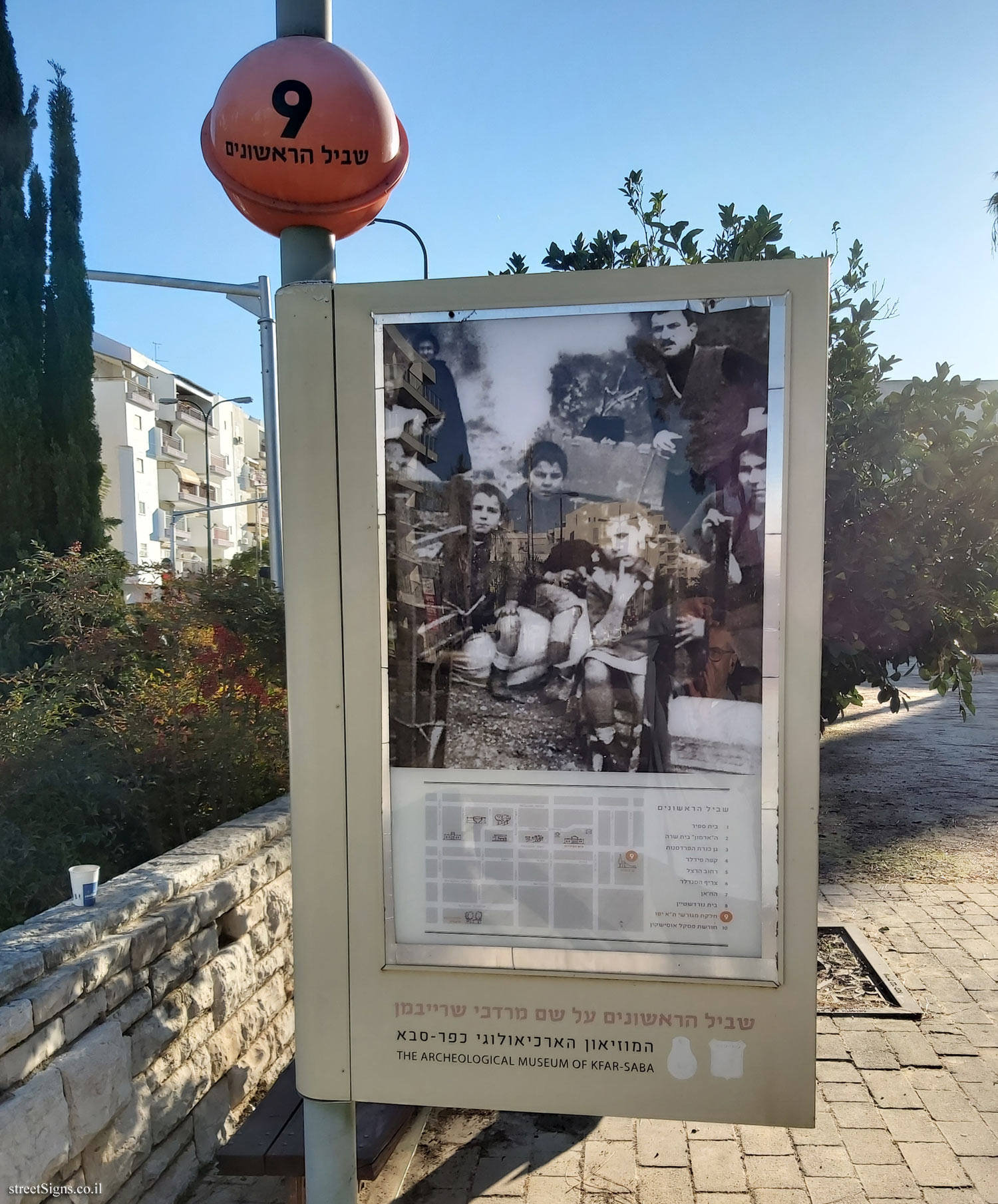The sign shape is rectangular but its head is designed according to the silhouette of the old building of the Gymnasia Herzliya, which serves as a logo of the Council for the Preservation of Heritage Sites in Israel
The plot was photographed on the same day, in the attached photo you can see the plain tombstones without a caption
 Click for a larger image
Click for a larger image In this plot there is also a sign of the burial society, indicating the reason for the lack of names on the gravestones:
Hevra Kadisha Kfar Saba
These are the tombstones for the sword refugees from Jaffa and the colonies
Who perished in starvation and plague
In the years 1914-1919
And were buried here without mentioning their names
R.I.P
 Click for a larger image
Click for a larger image Some of the tombstones bear inscriptions, such as the tombstone of Esther Binia, the wife of Benjamin Binya - the victims of the deportation from Jaffa
 Click for a larger image
Click for a larger image The place is also defined in station number 9 for the The Founders’ Path of Kfar Saba, and is indicated by a suitable sign
 Click for sign's details Translation of the text on the sign
Click for sign's details Translation of the text on the sign:
Symbol of the Council for the Preservation of Israeli Heritage Sites
Symbol of Kfar Saba Museum
Kfar Saba city emblem
Tel Aviv-Jaffa Evacuess Plot of Land Residents of Tel Aviv, Jaffa, and the southern colonies, who in the First World War, were expelled from their homes by the Turkish government for fear of collaborating with the British army that occupied the south of the country and advanced north, are buried in this plot.
The deportees arrived at the Kfar Saba colony, gathered in the Pascal-Ussishkin grove, and established their Sukkot there. The overcrowding and dirt at the site provided a fertile ground for the spread of the typhus epidemic, and about 240 of the deportees perished from the disease.
At first, all the deceased were buried in the old cemetery of the colony, but after a while it was decided to bury them in this plot. Joseph Freiber, who was a member of the colony, also died of the disease.
When the war ended, tombstones were built over the graves, but due to the circumstances of the events at the time of the burial itself, it was not possible to write the names of the deceased on all the tombstones.

 Click for a larger image
Click for a larger image  Click for a larger image
Click for a larger image  Click for a larger image
Click for a larger image  Click for sign's details
Click for sign's details